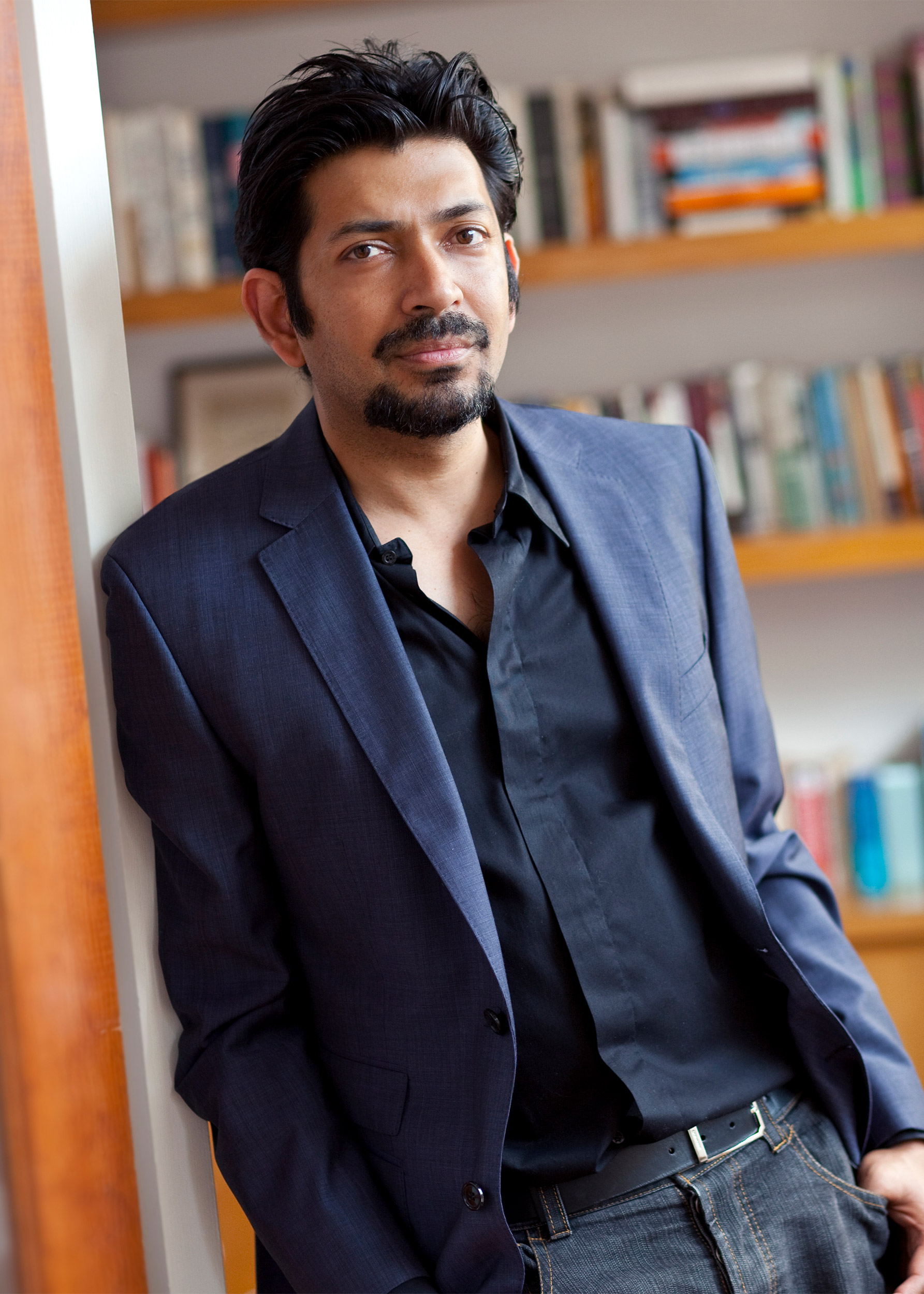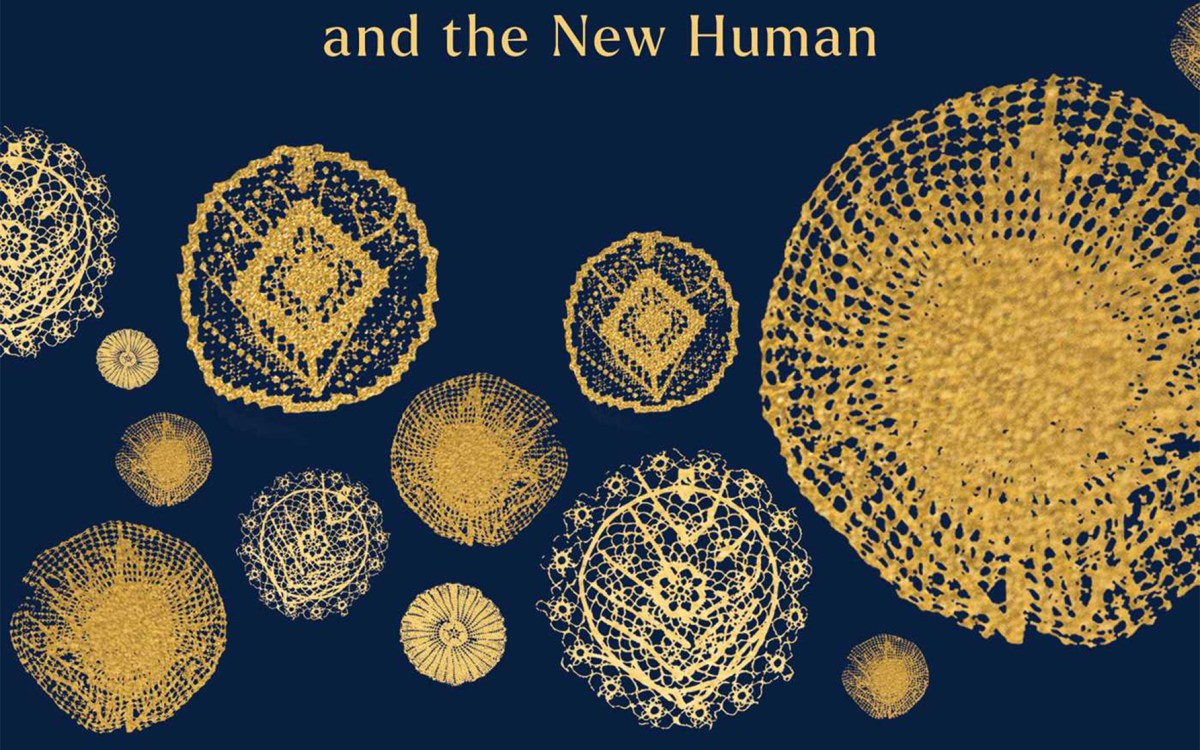Siddhartha Mukherjee on Aristotle, COVID, and the ‘new human’
Pulitzer Prize-winning physician-author returns with ‘Song of the Cell’

“A new science is being born. We are manipulating cells at a level that we haven’t before,” says Siddhartha Mukherjee.
Photo by Deborah Feingold
When the Harvard-trained physician and Pulitzer Prize-winning author Siddhartha Mukherjee talks about a “new human,” he doesn’t mean “Keanu Reeves in a black muumuu,” as he writes in his new book, “The Song of the Cell: An Exploration of Medicine and the New Human.” Instead, Mukherjee’s new human is more like the paradoxical ship of Theseus. Over time, each of the vessel’s original planks is removed and replaced with new wood. What if a human could be rebuilt the same way — with healthy replacements for aging or malfunctioning cells? Is that the same human or a new one?
In “Song of the Cell,” set to be published next week, Mukherjee explores these questions and others through stories from his own life: his efforts to diagnose and save patients (including one who barely survives a literal bloodbath), his own battle with a stubborn depression during the pandemic, and his father’s death. He talked about the experiences and research behind the book in a conversation with the Gazette. The interview was edited for clarity and length.
Q&A
Siddhartha Mukherjee
GAZETTE: Throughout the book, you reference not just historical scientific figures but also poets and philosophers, going as far back as Aristotle. How can ancient ideas help us understand modern medicine?
MUKHERJEE: It’s often forgotten that Aristotle was probably as much a biologist as he was a philosopher. The distinction between a natural scientist and philosopher was much blurrier then than it is today. For people like Aristotle, questions like, “Where do we come from?” and “What are we made of?” were very much questions of the natural sciences as well as philosophy.
GAZETTE: Many of the stories you include are about medical failures — or attempts to find cures that didn’t go quite right. Like, for example, when a physician tried to cure a patient’s psychiatric symptoms with an infusion of cow’s blood. Or more recently with the first bone-marrow transplants.
MUKHERJEE: In principle, why can’t human beings be transfused with cow’s blood? It looks similar under the microscope. What is it about cow’s blood that’s different from human blood? These failures are, in some ways, the beginnings of successful journeys. They also showcase science as a human endeavor that’s full of flaws. We make mistakes. We misunderstand things. We misunderstand each other.
I had this impromptu meeting with the nurses who worked on the first bone-marrow transplants, and they spontaneously started talking about the massive litany of failures. They cried; they hugged each other. They remembered the little boy in the bunker, the pilot who was fogged by plutonium and died from leukemia. And then they started talking about the successes. That was one story that really stuck with me.
More like this
GAZETTE: You dedicate a chapter to the pandemic and how it exposed “such deep and fundamental shortcomings in our knowledge of the biology of a system that we had thought we knew.”
MUKHERJEE: In all the sciences, you get to a point where you develop a kind of hubris and then something walks you back. There was a kind of hubris about Newtonian mechanics or understanding electricity and magnetism or atomic structure until suddenly people realized that if you go deeper into those areas, what was known didn’t compute. The pandemic demanded a kind of re-evaluation of what we do and don’t know. And not just about the immune system, because COVID impacts the immune system, our intestines, our respiratory systems, all the things that we thought we understood at a very deep level. All are being re-evaluated in the context of this virus and perhaps other viruses that will come after it.
GAZETTE: In the book’s last chapter, you talk about understanding cellular songs — how individual cells work together like an orchestra. Why is that such an important frontier to explore?
MUKHERJEE: To understand or build an organism, you ultimately need to understand the communications between individual parts of the organism. We are beginning to understand the parts but not the sum of the parts — the communications that go between organisms, or what I would call cellular ecology. The example that comes to mind is the famous conundrum of cancer metastases. Why aren’t there metastases in the spleen? The liver is a frequent site of metastasis — why? Is it the anatomy? Is it the ecology of the cells around it? I’ll give you one more example. Why are there such frequent metastases in what’s called the axial skeleton, the central skeleton, but very few in the distal skeleton in your fingers or in the other bones in your body? The answer, or answers, have to do with understanding not just anatomy but how cells communicate with each other; in this case, how cancer cells build homes around each other. That’s one of the mysteries that we need to understand. And that’s why the book is called “The Song of the Cell.”
GAZETTE: You also introduce the idea of a “new human,” which could be built rather than simply born. Today, many fear this kind of cellular manipulation, but you seem to caution people against that fear.
MUKHERJEE: I like that — “cautioning people against fear.” I’m not blithe about it either. I have my reservations. I’ve seen bone marrow transplants go horribly wrong. I don’t think it’ll all be smooth. But a new science is being born. We are manipulating cells at a level that we haven’t before. We’re building artificial pancreases and artificial hearts. The first time blood was transfused from one person to another — this was in the 1800s — people thought the person who emerged would be a different human being: They’d acquire the psyche of the other human. Blood was thought to be so important to your soul; it was who you were. And then blood was transferred from one human to another and nothing happened (when it was matched properly). But the person who emerged clearly carried at least some part of another human being within themselves.
So, I use the term “new human” very provocatively. In the first chapter, I say we’ve started thinking of “new human” as some kind of science fiction character. But the new human I’m talking about is one whose units are built new, but who might look like you and me. If someone receives a blood transfusion, that person is two people in one in some ways. For a long time, philosophers thought about human beings in toto. You were you, and that was the end. Now we’ve started building humans with cells or organs from other places, parts that may be enhanced or genetically altered. And yet we still take you as you. I think that’s a very interesting conundrum.







